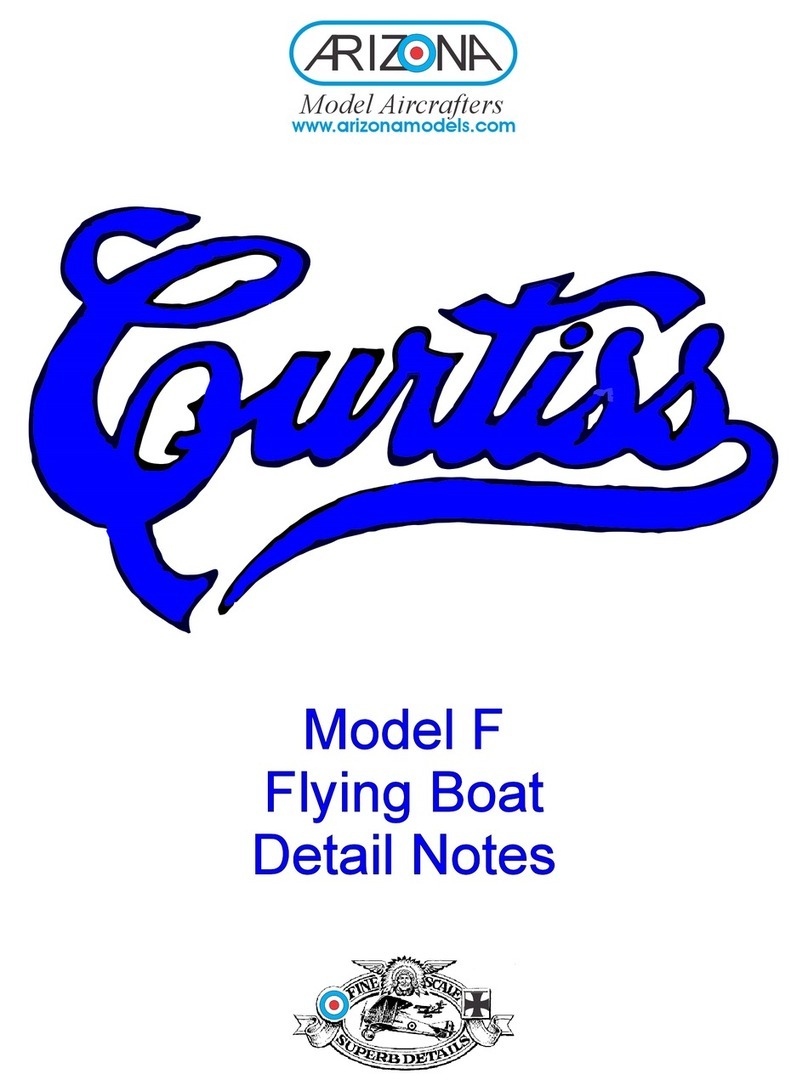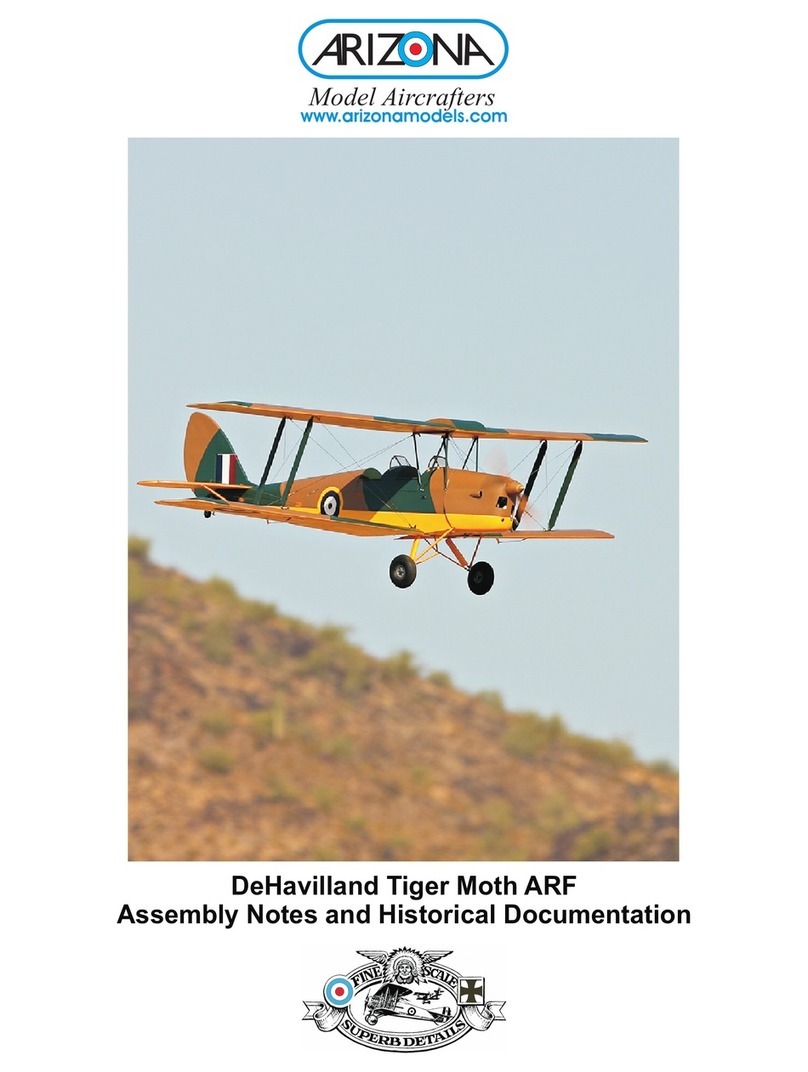
Preparation Note:
Wood grain is areas such as a wing leading edge and fuselage sections may show through the fabric. If necessary sand and
paint all wood surfaces with white or light grey primer before applying the fabric. This hides the visibility of the wood grain
through the thin fabric and increases the opacity of the material to give it a more realistic finish.
1.N ote: When peeling off the backing be very careful not to allow the fabric to stick to itself. Cover the bottom of the wings,
st
fuselage, etc. first with an un-socked, well-temperature-controlled iron at 100-120 C (21 Century iron is recommended).
Refer to your scale documentation for the proper orientation of the fabric pattern. Any overlapping fabric should be about a
¼” overlap.
2.I f the wing under camber is too much to get a permeant attaching, glue the fabric to the lower wing rib with tiny drops of thin
CA after using the iron and adding the top cover. This is necessary otherwise, the fabric may delaminate from the rib during
the shrinking stage or as the model ages.
3.W hen using the iron, an iron sock should be used and the temperature should be adjusted as shown below.
NOTE: This fabric shrinks very fast after a certain threshold temperature. Therefore, once you see the material starting to
shrink, move to the adjacent areas and let the first area cool before going over it for a second time to shrink it further. Keeping
the iron on the same area too long will cause fabric to pull off from balsa or worse, lozenge colors may also be damaged.
4.T he seams on the wing can be covered with strips cut from the Arizona Models Rib Tape prints. Straight cut the tape sections.
The Germans DID NOT cut the tape with pinking shears.
5.M arkings are painted on with Sig's butyrate color dope or Krylon paints.
6.A light MIST of Sig's butyrate clear dope is sprayed over the entire aircraft for protection against glow fuel and also to prevent
material to sag (it shrinks the fabric further when the dope dries). NOTE: Too much dope will case the fabric colors to start
running so extra care is needed when performing this step. SPRAY LIGHTLY. For electric or gas engines this is not required.
Any wrinkles as the model ages can be ironed out.
7.T o weather the fabric, small amounts of graphite powder, (this material is used for lubricating keyholes, etc., and is readily
available in hardware stores) may be rubbed against the fabric. Brush off the excess powder once the desired amount of grime
and dirt is achieved. Spray a second MIST of dope to keep the graphite powder on the fabric.
LOZENGE CAMOUFLAGE FABRIC COVERING PROCEDURE



































